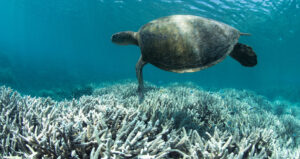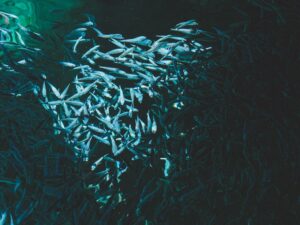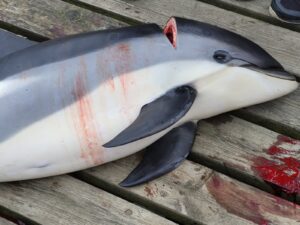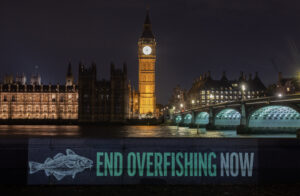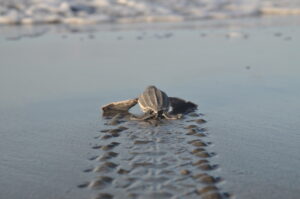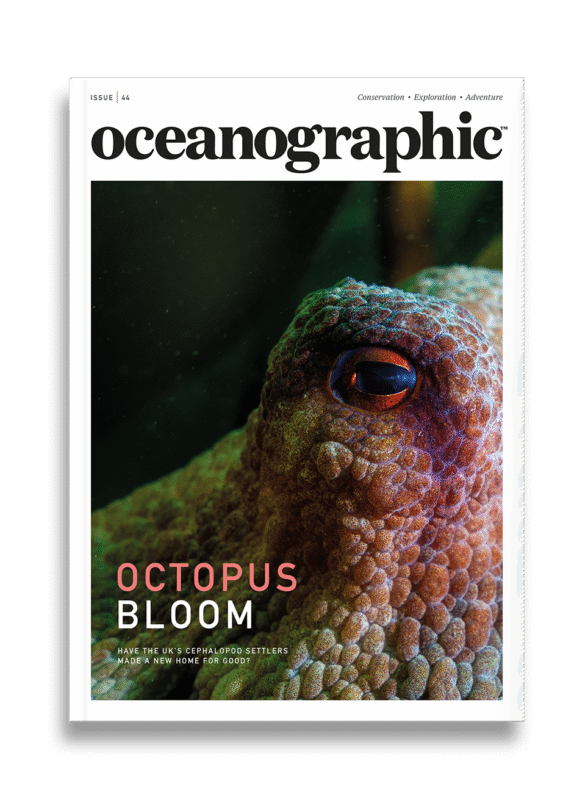Conservation concerto: "To save the ocean we must look to land"
Dr Lewis White is the Seascape Research Lead with Sussex Bay, an ambitious and collaborative project working to accelerate nature's recovery along the Sussex coastline here in the UK. It's vision: to restore 100 miles of coastline where seascape and rivers flourish.
If we want to save the ocean, we have to look closely at what is happening on the land. It’s often said that all rivers lead to the sea, and while that is not always the case, ecologically-speaking, it is true that the effects of terrestrial pollution and damage are ultimately felt in the ocean.
We talk about ‘restoring the seascape’ at Sussex Bay, where I am the lead scientist. That’s in recognition of the fact that it’s going to take a mosaic of revived habitats – marine, riverine, saltmarsh, pastural – to protect ocean life.
Sussex Bay is a community-born project, hosted by a local authority, which is restoring nature along over 100 miles of coast and out into our marine environment. It’s needed because in the UK there is no central funding pot for the ocean. We have a bold ambition to attract £50 million in funding for seascape recovery by 2050. We’re one year old, and we have already attracted £1.2 million to support a range of actions locally that support environmental recovery.
The intention is that by establishing the UK’s first ‘blue natural capital lab’ we will help to wash away the barriers to funding for smaller projects, and that by taking a seascape-wide view, we can help to connect and reinforce the great efforts already happening.
With our changing climate and polluted planet, marine life faces particular challenges. Unlike many land-based creatures, many oceanic animals cannot easily escape their environment. Many have nowhere to go when the waters run dirtier, warmer, and more acidic. Lots of them are ‘ectotherms’, which means that they are fully reliant on their surroundings for maintaining normal internal functioning.
In other words, they can’t just cool off if the waters in which they are immersed are too hot. Whilst species distribution is slowly changing due to the effects of climate change, that brings with it new challenges such as disrupting food webs, exposure to different predators and diseases, and a lack of suitable habitat for protection.



An ocean which is warming, acidifying, deoxygenating or becoming polluted brings all sorts of challenges. The accumulation of pollutants in the body, changes in food availability, and even noise pollution are all thought to affect the fertility of marine mammals.
Research suggests that Sussex is part of the home range of England’s only resident population of bottlenose dolphins. The Sussex Dolphin Project, supported by Sussex Bay, reports that this population appears to have a low birth rate, much like populations in the Sado Estuary in Portugal which have been considered to be in decline for three decades. Although we are not quite sure why, at least part of the answer may lie in the state of the marine world.
In Sussex, you will find a network of switched-on land managers, farmers, fishers and conservationists who are joining the dots between a healthy environment and a productive one. It’s a myth that we must choose between commercial use of natural resources or their recovery. For example, at Sussex Bay we work closely with the local fisher community who have deep historic connections with the ocean. Many of them, or their family-members, can remember when Sussex waters were awash with kelp, eels, sharks and seabream. Now, the degraded marine habitat makes their job as small-boat day fishers much, much harder.
The Sussex fishers are committed to bringing nature back to the sea. And at Sussex Bay, we’re helping them. Working with Sussex Wildlife Trust, we are rolling up our sleeves and helping to recycle their fishing nets, which the fishers would otherwise struggle to do because of the cost and the sheer volume that needs to be managed. The project stops nets being discarded in the ocean, entangling marine creatures and disturbing the seabed.
We’ve also helped to fund and project-manage the restoration of a hub for fishers in Worthing, where they can store their catch.




Similarly, upstream, land managers and farmers who want their land to be productive need healthy soils, abundant pollinators and clean waters. Many people within the Sussex farming community have swung behind Weald to Waves, a project Sussex Bay is closely collaborating with and one which is connecting nature corridors across the county.
But in addition to this shared commitment for nature recovery between farmers and fishers, there are deeper connections between what happens on land and in the ocean.
When artificial fertiliser is sprayed on crops, its nitrates and phosphates sweep downstream into the ocean. The same is true of plastics and urban pollution, water running across the lands picks up all sorts of pollutants which, if not dealt with or managed, eventually end up in the sea. And because of the way so many rivers have been straightened in order to create fields with hard edges, the agricultural run-off flows speedily, and unhindered, straight into the sea.
Left to their own devices, rivers will meander, slowing the flow and giving mud flats and salt marshes a chance to intercept sediment and filter pollution. In Sussex, the Adur Recovery Project, led by Knepp Wildland Foundation and supported by Sussex Bay, is working with land owners to return the rivers to their natural, weaving paths. This will help both marine and terrestrial life.
Further upstream is Knepp Wilding – a pioneering rewilding site – where a family of beavers are industriously creating dams and new wet areas. These ‘ecosystem engineers’ create vibrant habitats for biodiversity but also resilience in waterways: in times of drought, the areas around their lodges and dams stay wetter, and in times of flooding, the dams slow the cascade of water as it washes towards the ocean.
What’s more, the dams filter pollution, catching sediment, meaning the water that runs through them is a bit cleaner than that which rolls up behind it.



Downstream in the ocean itself, another species in Sussex is re-emerging too. Mussels, which can also filter out pollutants, are recovering. This is likely since the 2021 ban on industrial trawling in a 300 square kilometre area, which was introduced by Sussex Inshore Fishers and Conservation Authority. After the ban, the Sussex Kelp Recovery Project was launched. Like all good projects, this one is a collaboration too involving Sussex Wildlife Trust, Sussex Bay, Blue Marine Foundation and others.
Underwater footage and local divers have already recorded blue mussels covering significant areas as well as angelsharks, rays and cuttlefish right along our Sussex coast.
We are hopeful for the future. And we do know how to save the ocean. It starts on land. And it starts with us all working together.
Printed editions
Current issue
Back issues
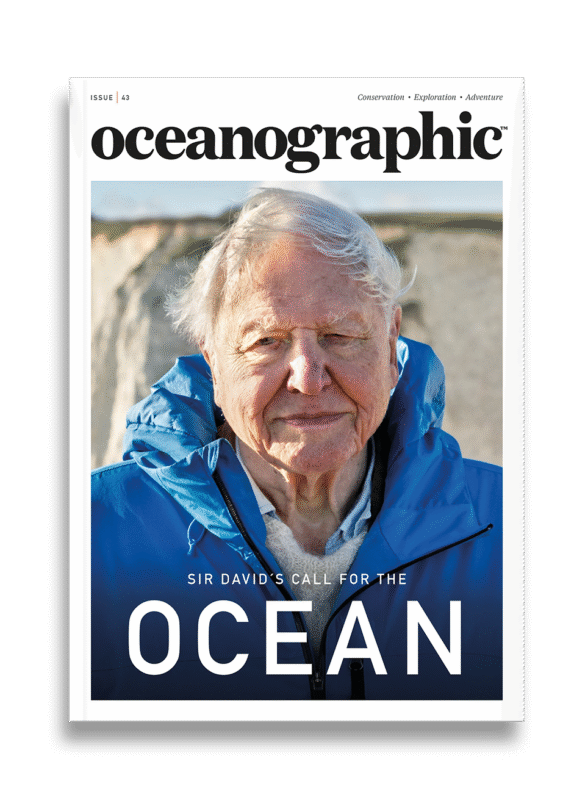
Back Issues
Issue 43 Sir David Attenborough’s ‘Ocean’

Back Issues
Issue 41 Holdfast to the canopy
Enjoy so much more from Oceanographic Magazine by becoming a subscriber.
A range of subscription options are available.
